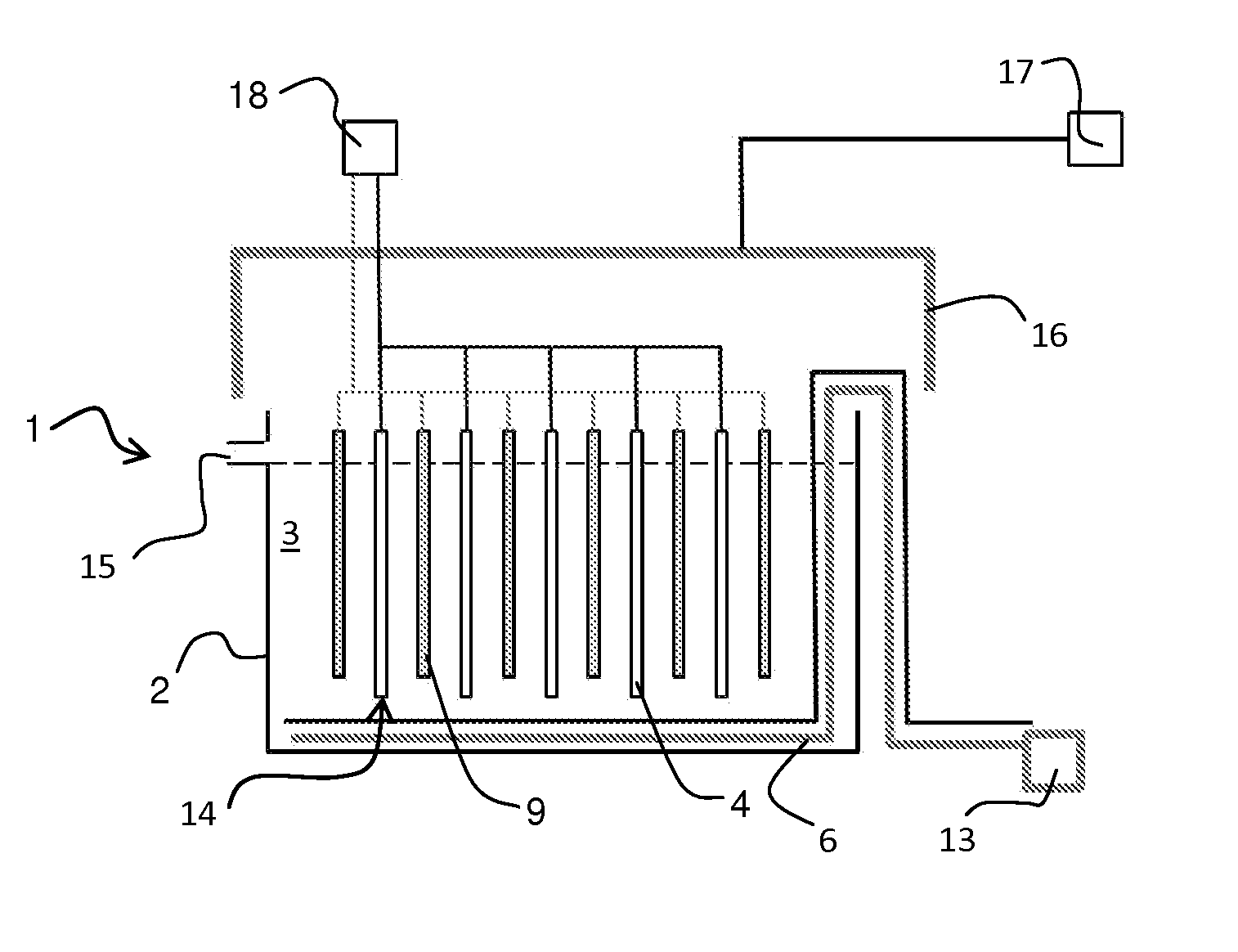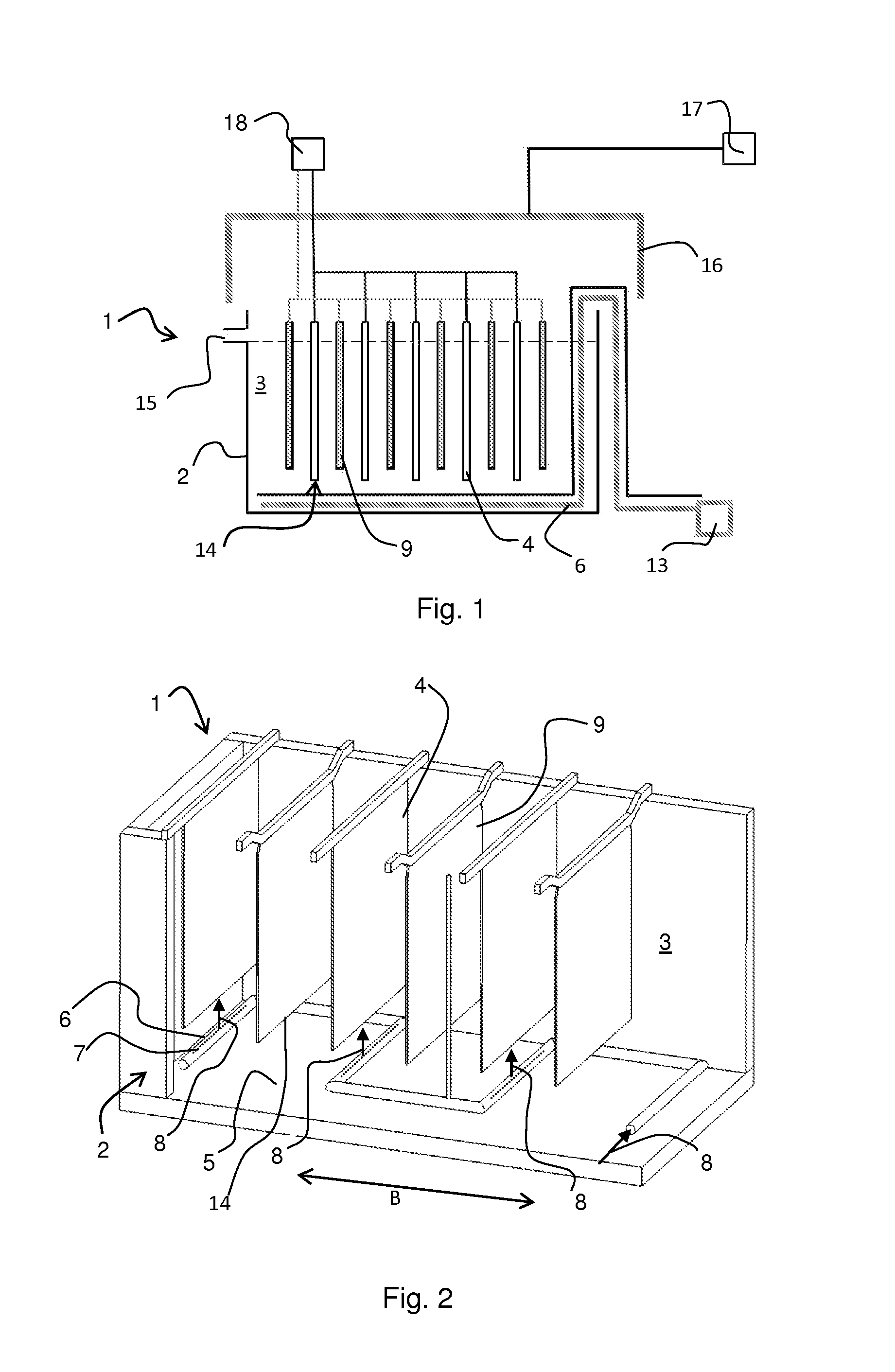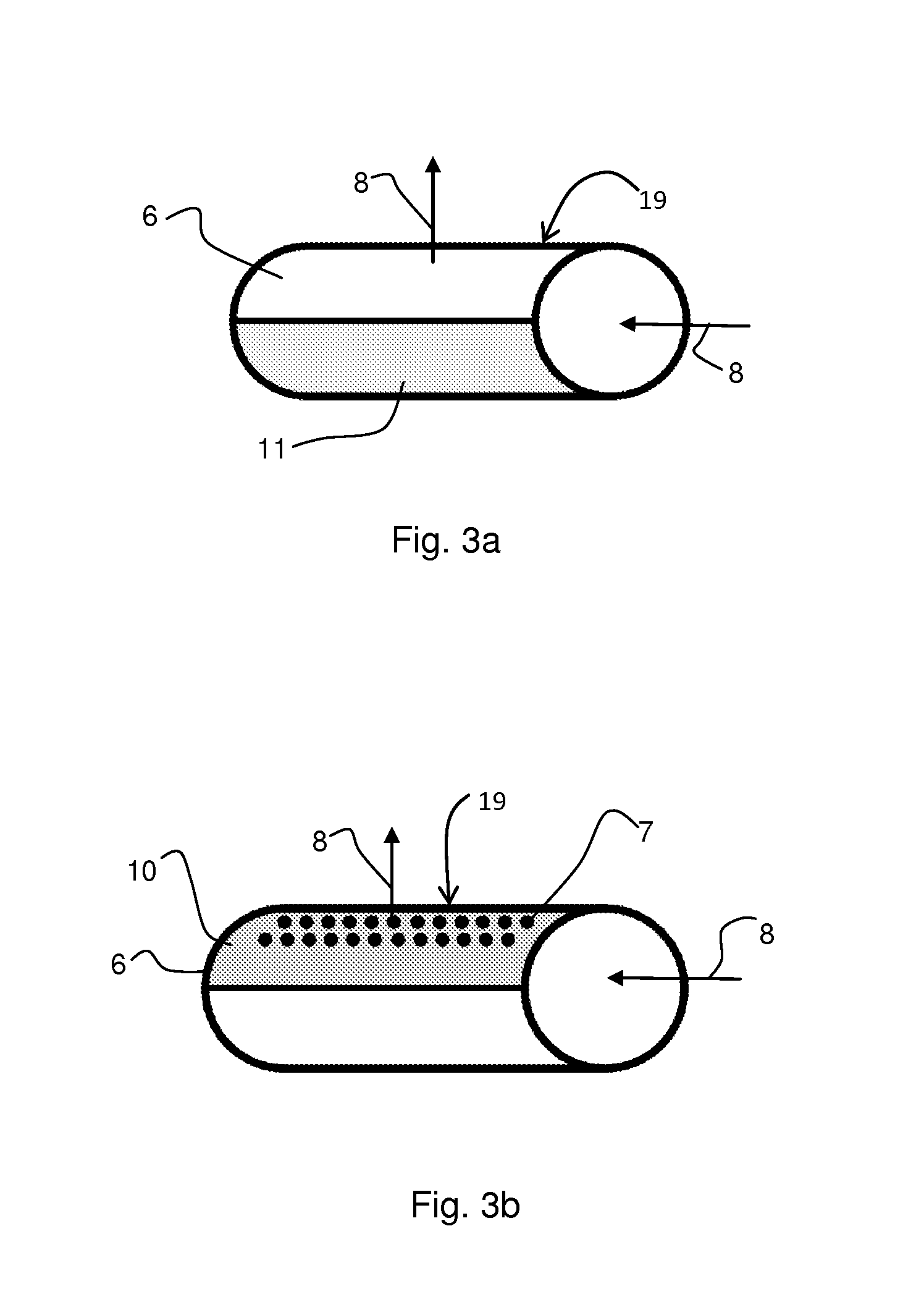Equipment and method for electrolytic recovery of metal
a technology of electrolytic recovery and equipment, which is applied in the field of gas duct system and equipment and a metal electrolytic recovery method, can solve the problems of not increasing indefinitely and achieve the effect of increasing the current density without lowering the quality of the precipitate, reducing pressure, and increasing the production capacity of plants
- Summary
- Abstract
- Description
- Claims
- Application Information
AI Technical Summary
Benefits of technology
Problems solved by technology
Method used
Image
Examples
example 1
[0021]About 10 m of seepage hose was placed in a framework forming nine rows, each row one metre long. The hose was treated with suitable glue, so that the air to be blown through the pipe was not allowed to penetrate from the pipe walls other than directly upwards. The framework was placed in a transparent cell, which was filled with water. When blowing air into the seepage hose piping at a rate of 120 ml m−1 min−1 from the hoses, an even bubble wall resulted with the bubble size varying within a range of 0.1-3 mm.
example 2
[0022]An industrial fabric was wrapped tightly around a metal pipe having holes pointing directly upwards. The pipe was placed on the bottom of an electrolysis cell having a height of 1.2 m (width 25 cm, volume 62 L) under a steel plate functioning as a cathode, so that when blowing air into the piping, bubbles were distributed from the bottom edge of the cathode and they ascended uniformly to both sides of the cathode. The cell was filled with an electrolyte containing 40 g / l of copper and 175 g / l of sulphuric acid. 46.5 L / h of electrolyte was supplied into the cell and the temperature of the electrolyte was 45° C. during the test. Copper was precipitated on to the cathode surface for 24 h using a current density of 450 Am −2, at the same time blowing air through the piping. The surface of the copper precipitate formed was examined with a SEM microscope (scanning electron microscope) and with an optical microscope. In addition, a cross-sectional micro-section was examined with an o...
example 3
[0023]With the equipment of Example 2, a bubbling piping was placed in a transverse position against the cathodes. Guiding components were attached to the anodes to guide the bubbles uniformly on to the cathode surface. The test according to Example 2 was repeated using a current density of 450 Am−2 and the copper precipitate was examined. The precipitate had a smooth surface, it was dense and the crystalline growth was uniform, as in the case of Example 2, where the copper precipitate was produced with the aid of bubbling.
PUM
| Property | Measurement | Unit |
|---|---|---|
| diameter | aaaaa | aaaaa |
| diameter | aaaaa | aaaaa |
| distance | aaaaa | aaaaa |
Abstract
Description
Claims
Application Information
 Login to View More
Login to View More - R&D
- Intellectual Property
- Life Sciences
- Materials
- Tech Scout
- Unparalleled Data Quality
- Higher Quality Content
- 60% Fewer Hallucinations
Browse by: Latest US Patents, China's latest patents, Technical Efficacy Thesaurus, Application Domain, Technology Topic, Popular Technical Reports.
© 2025 PatSnap. All rights reserved.Legal|Privacy policy|Modern Slavery Act Transparency Statement|Sitemap|About US| Contact US: help@patsnap.com



